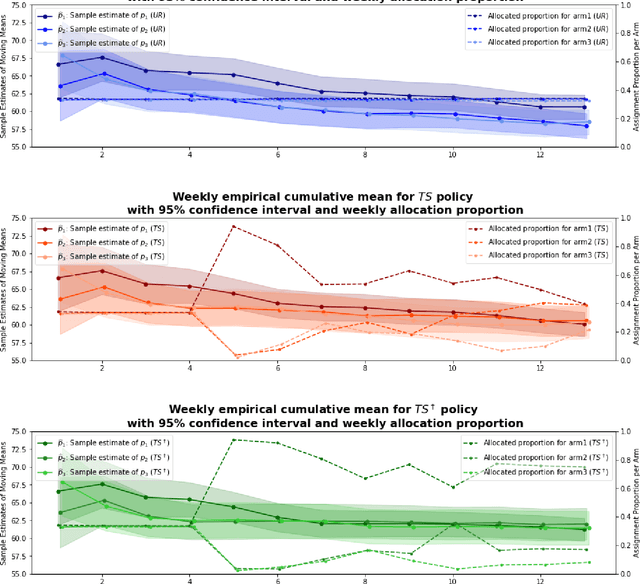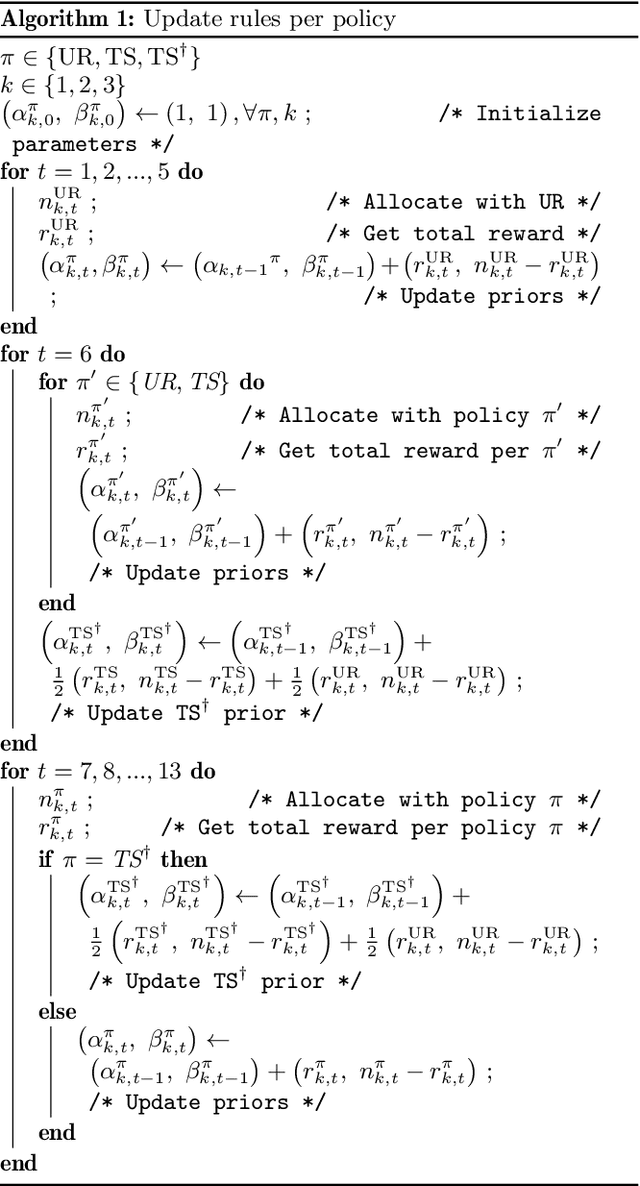Angela Zavaleta-Bernuy
Opportunities for Adaptive Experiments to Enable Continuous Improvement that Trades-off Instructor and Researcher Incentives
Oct 18, 2023



Abstract:Randomized experimental comparisons of alternative pedagogical strategies could provide useful empirical evidence in instructors' decision-making. However, traditional experiments do not have a clear and simple pathway to using data rapidly to try to increase the chances that students in an experiment get the best conditions. Drawing inspiration from the use of machine learning and experimentation in product development at leading technology companies, we explore how adaptive experimentation might help in continuous course improvement. In adaptive experiments, as different arms/conditions are deployed to students, data is analyzed and used to change the experience for future students. This can be done using machine learning algorithms to identify which actions are more promising for improving student experience or outcomes. This algorithm can then dynamically deploy the most effective conditions to future students, resulting in better support for students' needs. We illustrate the approach with a case study providing a side-by-side comparison of traditional and adaptive experimentation of self-explanation prompts in online homework problems in a CS1 course. This provides a first step in exploring the future of how this methodology can be useful in bridging research and practice in doing continuous improvement.
Using Adaptive Experiments to Rapidly Help Students
Aug 10, 2022Abstract:Adaptive experiments can increase the chance that current students obtain better outcomes from a field experiment of an instructional intervention. In such experiments, the probability of assigning students to conditions changes while more data is being collected, so students can be assigned to interventions that are likely to perform better. Digital educational environments lower the barrier to conducting such adaptive experiments, but they are rarely applied in education. One reason might be that researchers have access to few real-world case studies that illustrate the advantages and disadvantages of these experiments in a specific context. We evaluate the effect of homework email reminders in students by conducting an adaptive experiment using the Thompson Sampling algorithm and compare it to a traditional uniform random experiment. We present this as a case study on how to conduct such experiments, and we raise a range of open questions about the conditions under which adaptive randomized experiments may be more or less useful.
Increasing Students' Engagement to Reminder Emails Through Multi-Armed Bandits
Aug 10, 2022



Abstract:Conducting randomized experiments in education settings raises the question of how we can use machine learning techniques to improve educational interventions. Using Multi-Armed Bandits (MAB) algorithms like Thompson Sampling (TS) in adaptive experiments can increase students' chances of obtaining better outcomes by increasing the probability of assignment to the most optimal condition (arm), even before an intervention completes. This is an advantage over traditional A/B testing, which may allocate an equal number of students to both optimal and non-optimal conditions. The problem is the exploration-exploitation trade-off. Even though adaptive policies aim to collect enough information to allocate more students to better arms reliably, past work shows that this may not be enough exploration to draw reliable conclusions about whether arms differ. Hence, it is of interest to provide additional uniform random (UR) exploration throughout the experiment. This paper shows a real-world adaptive experiment on how students engage with instructors' weekly email reminders to build their time management habits. Our metric of interest is open email rates which tracks the arms represented by different subject lines. These are delivered following different allocation algorithms: UR, TS, and what we identified as TS{\dag} - which combines both TS and UR rewards to update its priors. We highlight problems with these adaptive algorithms - such as possible exploitation of an arm when there is no significant difference - and address their causes and consequences. Future directions includes studying situations where the early choice of the optimal arm is not ideal and how adaptive algorithms can address them.
 Add to Chrome
Add to Chrome Add to Firefox
Add to Firefox Add to Edge
Add to Edge